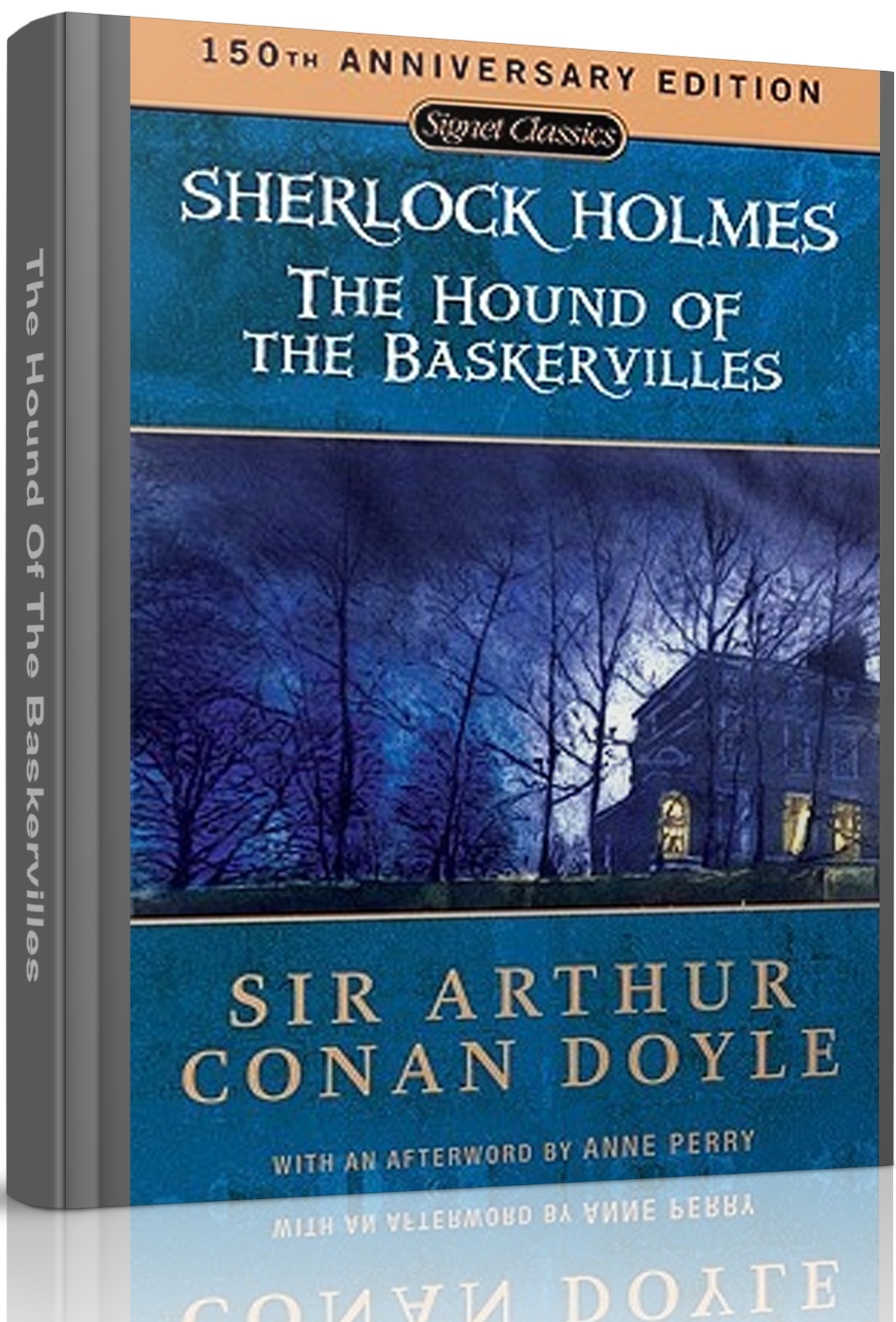The Hound of Baskervilles Review
Author: Sir Arthur Conan Doyle
One of the most famous detectives in literature, Sherlock Holmes, spawned a genre based upon intricate plots, mystique and human psychology. Sir Arthur Conan Doyle initially began his timeless detective stories with A Study in Scarlet while working an unsuccessful eye specialist job in a small English village called Southsea. A Study in Scarlet was published in 1887 by a small British company called Ward Lock & Co. Growing weary of Holmes and writing crime stories, Doyle attempted to kill off the famous detective in The Final Problem, published in 1893. However, due to popular demand, Doyle revived Holmes in the novel, The Hound of Baskervilles.
Plot Overview: Throughout Doyle’s previous works and in The Hound of Baskervilles, the narrative is told through the eyes of Holmes’s partner and closest friend, Dr. John H. Watson. The client whom came to visit Holmes in his estate on Baker Street, Dr. James Mortimer, sought out Holmes’s assistance on a case which dealt with Mortimer’s friend, Charles Baskerville, and the curse of the Hound. Mortimer said that the curse began with Hugo Baskerville around 1647. While chasing after a woman of his affections, Hugo and the woman were found dead near the family estate and, according to Mortimer’s account: “…standing over Hugo, and plucking at his throat, there stood a foul thing, a great black beast, shaped like a hound, yet larger than any hound that ever a mortal eye has rested upon.” Mortimer also described the hound having “blazing eyes and dripping jaws.”
Initially, Holmes is skeptical of the tale until Mortimer brings out an article detailing the death of Charles Baskerville and the location of his body down the moor near the Baskerville estate. One witness claimed to have heard howling off in a distant direction during the time Charles Baskerville began his usual nightly walk. The cause of death to the old Baskerville was difficult breathing and a heart attack, yet no signs were found on his body, only a dog’s paw prints on top of Baskerville’s own footprints. After thorough questioning from Holmes, it is revealed that an heir named Henry Baskerville, is to reside in the family estate and resume Charles Baskerville’s philanthropic work.
After meeting with Henry Baskerville, a letter was brought to Holmes’s attention: As you value your life or your reason, keep away from the MOOR.
As a classic, Doyle’s work has a mix of moments that are dialogue heavy and quiet moments with Watson’s perspective on the entire case. During the moments of dialogue, he takes a step back and allows the reader to understand the situation from a neutral perspective, allowing us to absorb the facts as they come. However, Watson is no mere spectator of the story, as he becomes integral to solving the case through his reports to Holmes on the matters in and outside the Baskerville estate, and through his diary entries. Throughout most of the Hound, our main character Sherlock Holmes is out of the picture. During this time, Doyle allows Watson time for character development by showing the audience how much he has learned from Holmes in crime solving and investigation.
The other side characters such as Laura Lyons, James Mortimer, the Stapletons, the Barrymores and the convict Selden, are all important in the grand scheme of the plot. These characters also get character development through moments of dialogue between themselves and Watson, yet also from outside sources to give a clearer understanding as to how they all connect. The villain of the story is created very well, coming off as plain yet eccentric, giving no indication as to who he truly is or his motives until all is revealed in the Retrospective chapter.
One minor complaint I do have is, although we see Watson’s methods of investigation, the action taking place with Sherlock Holmes occurs off screen and is not revealed until he meets with Watson through a face to face dialogue. Some loose ends are also not tied up until the Retrospection chapter, explained through Holmes’s account of the case and how he, along with Watson’s reports, came to the finale. I can understand that the reader is not supposed to know every meticulous detail because we are told everything through Watson’s eyes, but the story itself would have been more well-rounded.
The Hound of Baskerville is a fascinating tale with a spider web of plot elements which connect cohesively, each character has their time in the spotlight, the details to which the case is solved are executed in a trail which allows the reader to understand the story and carries a consistent, somber tone, throughout the story. Can I recommend this book to anyone?
Elementary, my dear Watson. Of course, I can.

